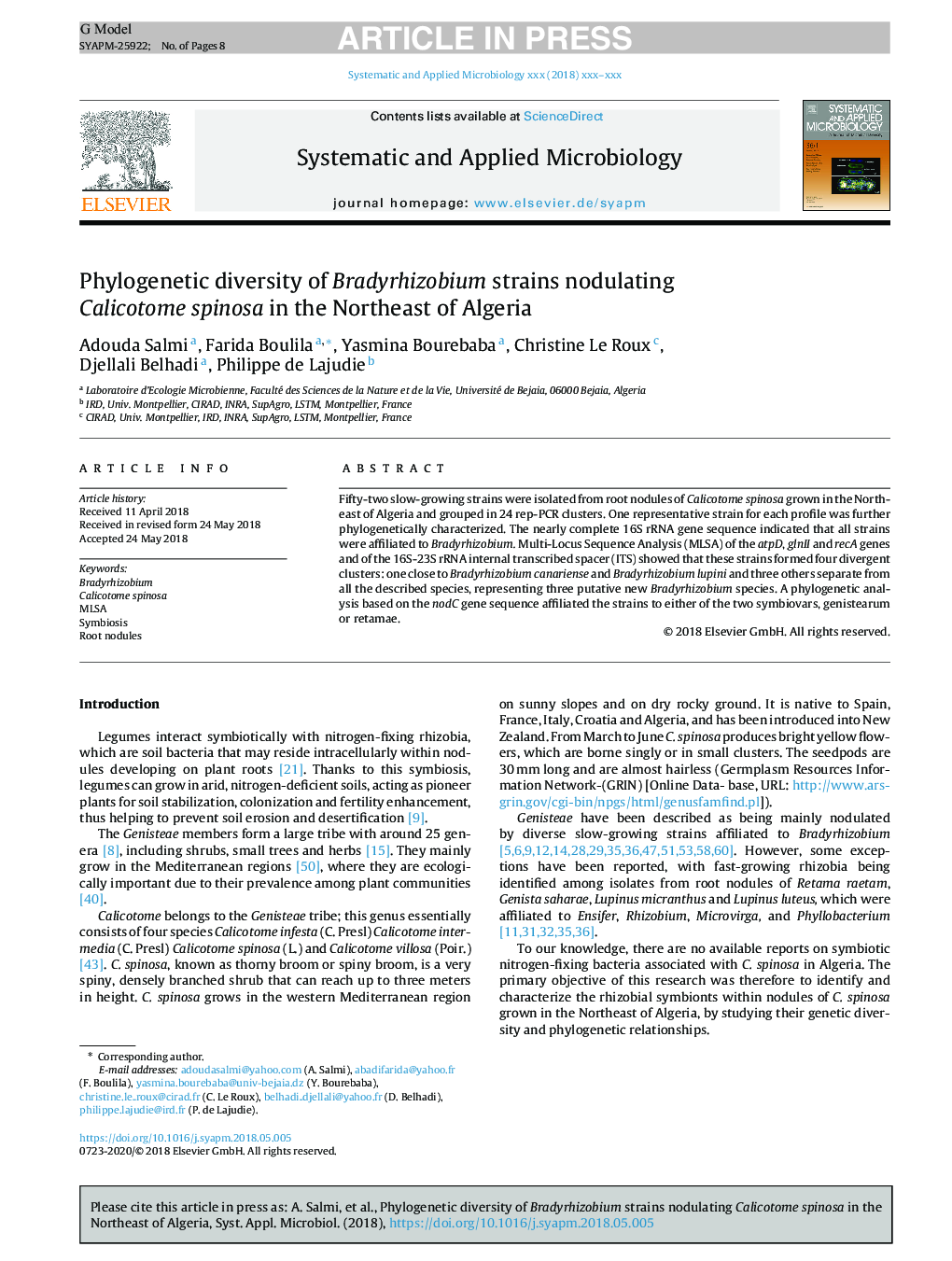| Article ID | Journal | Published Year | Pages | File Type |
|---|---|---|---|---|
| 10157323 | Systematic and Applied Microbiology | 2018 | 8 Pages |
Abstract
Fifty-two slow-growing strains were isolated from root nodules of Calicotome spinosa grown in the Northeast of Algeria and grouped in 24 rep-PCR clusters. One representative strain for each profile was further phylogenetically characterized. The nearly complete 16S rRNA gene sequence indicated that all strains were affiliated to Bradyrhizobium. Multi-Locus Sequence Analysis (MLSA) of the atpD, glnII and recA genes and of the 16S-23S rRNA internal transcribed spacer (ITS) showed that these strains formed four divergent clusters: one close to Bradyrhizobium canariense and Bradyrhizobium lupini and three others separate from all the described species, representing three putative new Bradyrhizobium species. A phylogenetic analysis based on the nodC gene sequence affiliated the strains to either of the two symbiovars, genistearum or retamae.
Related Topics
Life Sciences
Agricultural and Biological Sciences
Ecology, Evolution, Behavior and Systematics
Authors
Adouda Salmi, Farida Boulila, Yasmina Bourebaba, Christine Le Roux, Djellali Belhadi, Philippe de Lajudie,
